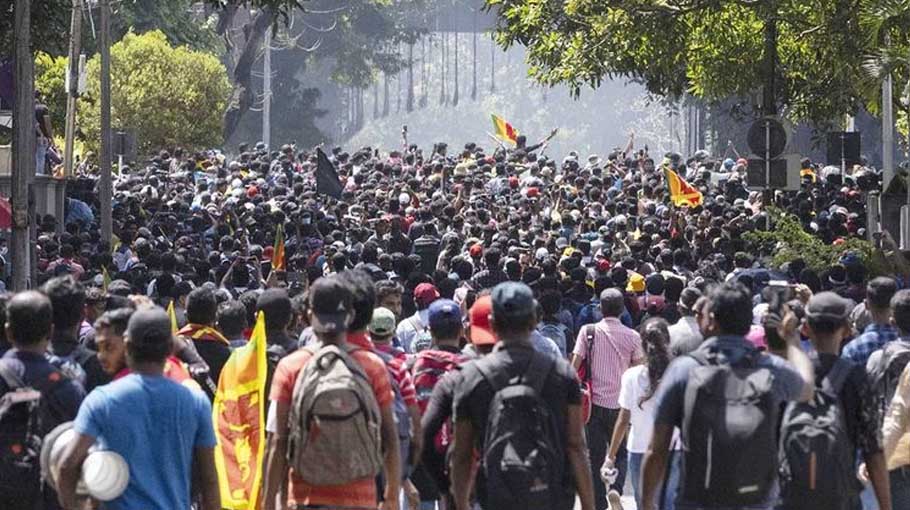Growing protests worldwide but not with similar risks

The massive protest in Sri Lanka and its success in forcing its President and Prime Minister to resign has caught global attention. Coinciding with the powerful images of protesters occupying the Sri Lankan President’s palace, the footage of mass demonstrations in the Netherlands, Argentina, and Albania have also taken most of the media space in recent weeks.
The finance minister of Argentina has already resigned. Dutch farmers have staged protests outside the home of country’s agriculture minister, and thousands of Albanians have gone to the streets calling on the government to resign.
Protests have erupted from Zimbabwe to Ecuador, Italy to Belgium, Kenya to Ghana. This increasing number of high-octane mass protests has made many speculate that the Sri Lankan scenario is repeating in many other countries and becoming a global threat to peace and stability and hampering economic recovery and the measures to curb climate change.
The structure and ethos of governments may be willing to adjust and
respond to the protesting public and their demands that not only
improve the quality of governance but also bring further legitimacy to the regime
Read More: How to reverse the West’s creativity crisis
There is no doubt that several regimes in the world are facing widespread anger due to price rises, rising inequality, lack of jobs, and actions or inactions towards creating a greener world. However, the increase in the number of protests is not a new development.
A study by Friedrich-Ebert-Stiftung and the Initiative for Policy Dialogue in 2021 shows that the number of protests worldwide has tripled in the last 15 years. In 2006, there were only 73 recorded protest movements, and that number reached 251 in 2020. However, only 42 per cent of these protests have been successful.
Protests are often projected in media very unflatteringly, blaming them for disorderly acts. Though the number of violent protests has increased in recent years, most protests remained peaceful. In one-fifth of the protests only, the protesters had used some form of violent actions like vandalism.
A recent study by the IMF confirms that the rising number of popular protests and antigovernment demonstrations has increased since 2016. Before the pandemic, several countries in the MENA region, particularly Algeria, Iran, Iraq, and Lebanon, had witnessed mass protests.
Even during the pandemic, several mass protests took place in rich countries like Austria, Canada, and New Zealand, and in developing countries like Brazil, India, Kazakhstan, and Sudan. Though these social unrests took a little pause during the pandemic, protesting people have been returning to the streets in large numbers.
The immediate causes are decreased fear of catching Covid-19 and rising food and fuel prices. But the number of protests at this time remains low compared to the pre-pandemic level.
Inflation has become a significant issue. The Ukraine War has worsened the situation, adding further to inflationary woes and surging the food, fuel, and fertiliser prices globally.
Protests have built-up all-over Africa and Latin America over surging fuel costs. Governments in Panama and Ecuador have been forced to lower fuel prices.
Russia and Ukraine are also key to the global food security regime, and the war in the region and the resulting disruption to critical supply routes have pushed food prices to the roof. Besides Sri Lanka, protesters in Chile, Iran, Iraq and other nations have already taken to the streets over rising food prices.
Last month, the German multinational financial services company Allianz warned businesses to prepare for a rise in civil unrest due to the cost-of-living crisis.
There is no doubt that the summer months of 2022 have been witnessing increasing protests and strikes. In many countries the protest movement is just another form of popular participation in the governance of a country. The nature and number of protests reflect the relationship between people and the authorities.
The character and quality of the government strongly influence the intensity and demand of the protest. People participate in protests to pressure and persuade authorities to resolve a particular problem or a set of problems.
The structure and ethos of governments may be willing to adjust and respond to the protesting public and their demands that not only improve the quality of governance but also bring further legitimacy to the regime.
It is high time that countries must focus more on alleviating their people’s difficulties and sufferings due to the unprecedented surge in food and fuel prices.
Ashok Swain is a Professor of Peace and Conflict Research at Uppsala University, Sweden. Source: Gulf News



